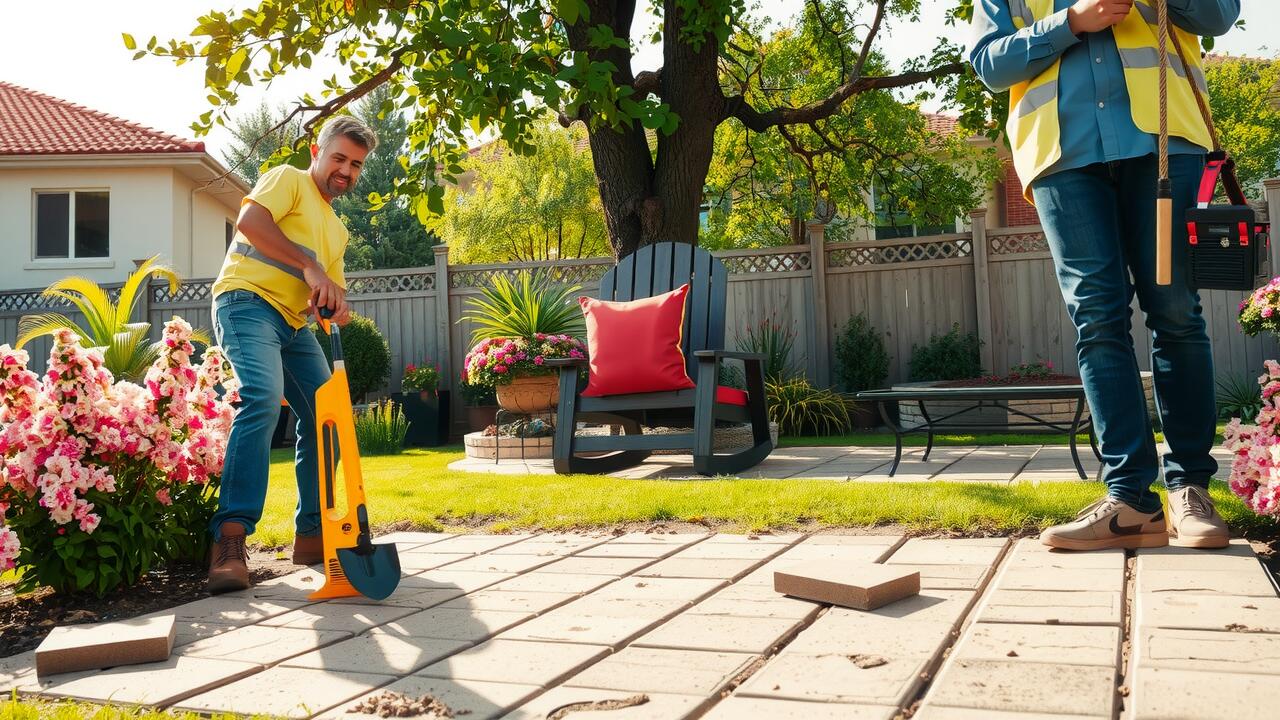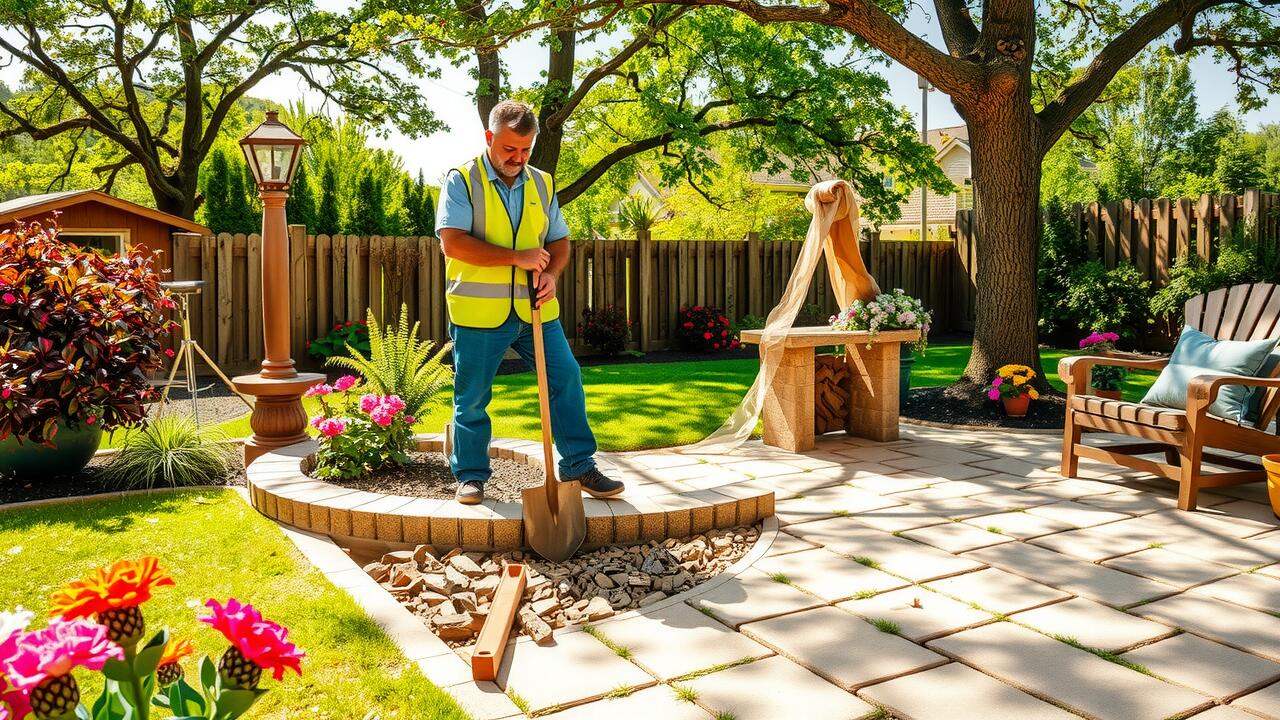
Enhancing Your Concrete Slab
Enhancing your concrete slab not only improves aesthetics but also increases its functionality. One popular option is to incorporate decorative elements during the patio installation process. Techniques such as stamping or staining can transform an ordinary slab into a visually appealing outdoor space. These treatments can mimic the look of stone or brick, adding character while maintaining the durability of concrete.
Another way to enhance a concrete slab is through the addition of functional features. Consider integrating built-in seating or planters during patio installation. These additions not only maximize the use of space but also create a cohesive design. Strategic placement of outdoor lighting can further elevate the atmosphere, making the area usable and inviting after dark.
Surface Treatments
Surface treatments for concrete slabs can significantly enhance both aesthetics and durability. By applying various coatings or finishes, homeowners can customize the look of their concrete surfaces. Popular options include staining, sealing, and polishing. Staining adds rich colors that can mimic stone or create unique patterns. Sealing protects the slab from moisture and stains while offering a glossy or matte finish. Polished concrete provides a sleek, high-end appearance, making it popular for indoor spaces and outdoor areas alike, such as during patio installation.
Incorporating surface treatments during patio installation can also improve traction and reduce the risk of slips and falls. Textured finishes can create a non-slip surface, ideal for areas exposed to rain. Additionally, surface treatments can help prevent cracking and weathering over time. Homeowners should consider their specific needs and preferences when choosing a treatment, balancing aesthetics with functionality. Proper application and maintenance of the chosen finish will ensure the longevity of the concrete slab.
DIY vs. Hiring Professionals
Many homeowners consider a DIY approach for patio installation due to the potential cost savings. With proper research and planning, individuals can manage the project efficiently. Tasks such as measuring, pouring, and finishing the concrete can be tackled if one has the right tools and some basic construction knowledge. Additionally, the satisfaction of completing a project independently can be rewarding for many.
On the other hand, hiring professionals for patio installation guarantees a high level of expertise. Experienced contractors understand the nuances of mixing and pouring concrete, ensuring durability and proper drainage. They can navigate any unforeseen issues during the project, which may be challenging for inexperienced individuals. The investment in skilled labor often results in a polished finish and minimizes the risk of costly mistakes.
Pros and Cons of Each Option
Choosing to tackle a patio installation project yourself can be appealing due to potential cost savings. DIY enthusiasts often enjoy the satisfaction of creating something with their own hands. However, without the proper skills or experience, mistakes can lead to additional expenses and frustration, especially when ensuring the slab’s durability and levelness.
Hiring professionals for patio installation offers expertise and efficiency. Contractors possess the knowledge to navigate challenges that may arise during construction. Nonetheless, this option typically comes with a higher upfront cost. Homeowners must weigh the benefits of quality and time against the budget they have allocated for the project.
Permitting and Code Requirements
When planning for a 24×24 concrete slab, it’s essential to understand local permitting and code requirements. Many municipalities require permits for patio installation, especially if the slab is intended for a permanent structure. Before beginning your project, check with your local zoning board or building department. This step ensures compliance with local regulations that cover aspects like drainage, distance from property lines, and other safety considerations.
Understanding these regulations is crucial to avoid unexpected delays or fines. Each locality may have specific codes regarding the depth of the slab, reinforcement standards, and how the slab interacts with existing structures. Failing to adhere to these requirements can lead to significant problems down the line, including the necessity for costly modifications or the complete removal of the slab. Proper planning in line with local codes sets the foundation for a successful patio installation.
Understanding Local Regulations
Local regulations play an essential role in any patio installation project. Homeowners must be aware of zoning laws, building codes, and permits required for construction. These regulations can vary widely depending on the municipality. It’s important to check with local authorities to ensure compliance with all necessary guidelines.
Ignoring local regulations can lead to fines or complications down the road. In some cases, failure to obtain the required permits may result in the need to remove or modify the installed slab. Proper planning involves understanding and adhering to these rules to avoid potential issues. Being proactive about local regulations can save time and money in the long run.
FAQS
How much does a 24×24 concrete slab typically cost?
The cost for a 24×24 concrete slab can vary widely but typically ranges from $1,200 to $2,400, depending on factors like location, materials, and labor.
What factors can influence the price of a concrete slab?
Several factors can influence the price, including the thickness of the slab, surface treatments, local labor rates, and any additional features like reinforcement or excavation needed.
Can I save money by pouring the slab myself?
Yes, pouring the slab yourself can save money on labor costs, but it’s important to consider your skill level, tools required, and the amount of time it will take.
Are there any permits required for pouring a concrete slab?
Yes, many local jurisdictions require permits for pouring concrete slabs, especially for larger projects. It’s best to check with your local building department for specific requirements.
What surface treatments can enhance my concrete slab?
Surface treatments such as staining, sealing, or applying a decorative overlay can enhance the appearance and durability of your concrete slab, adding to the overall cost.
